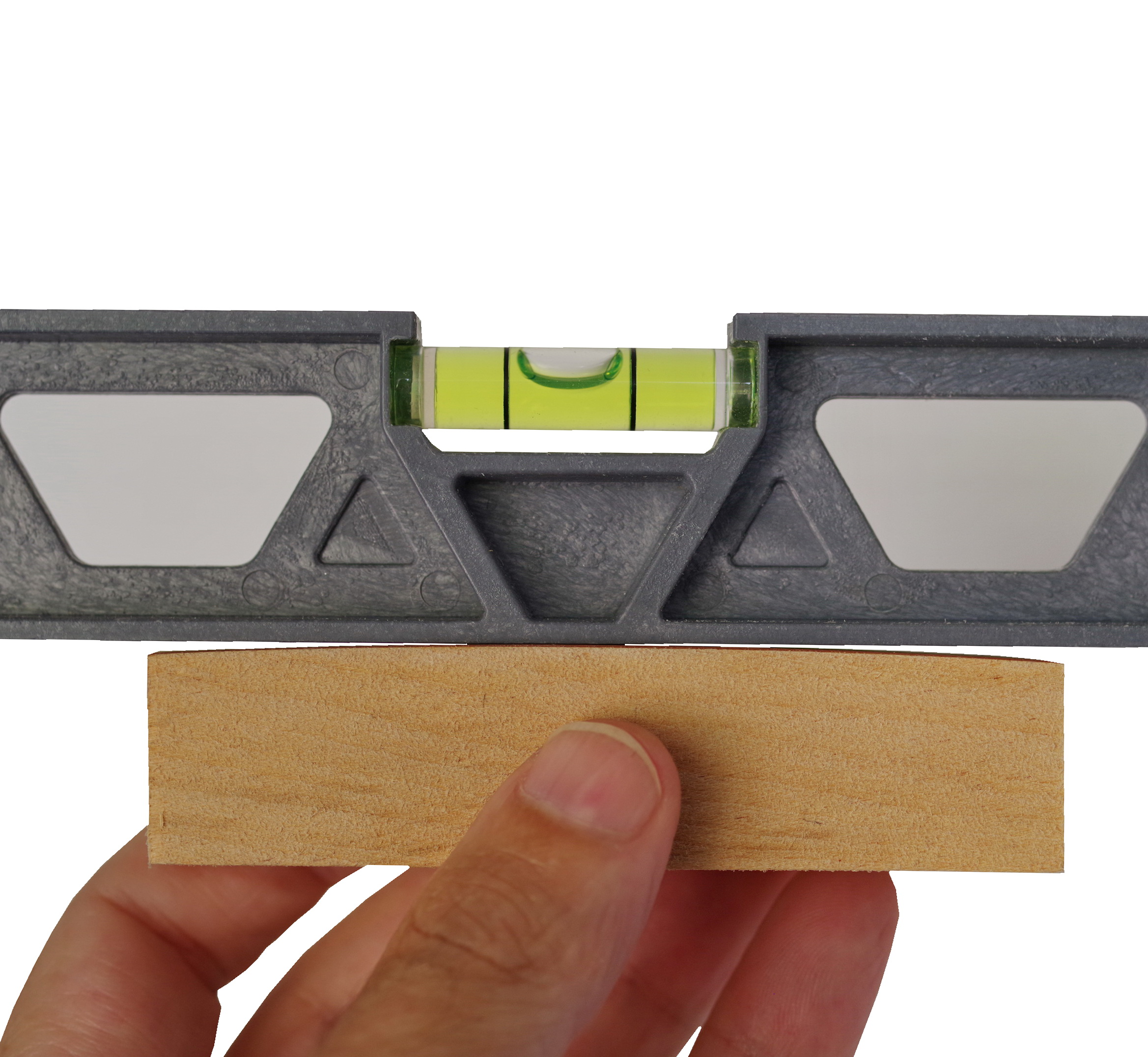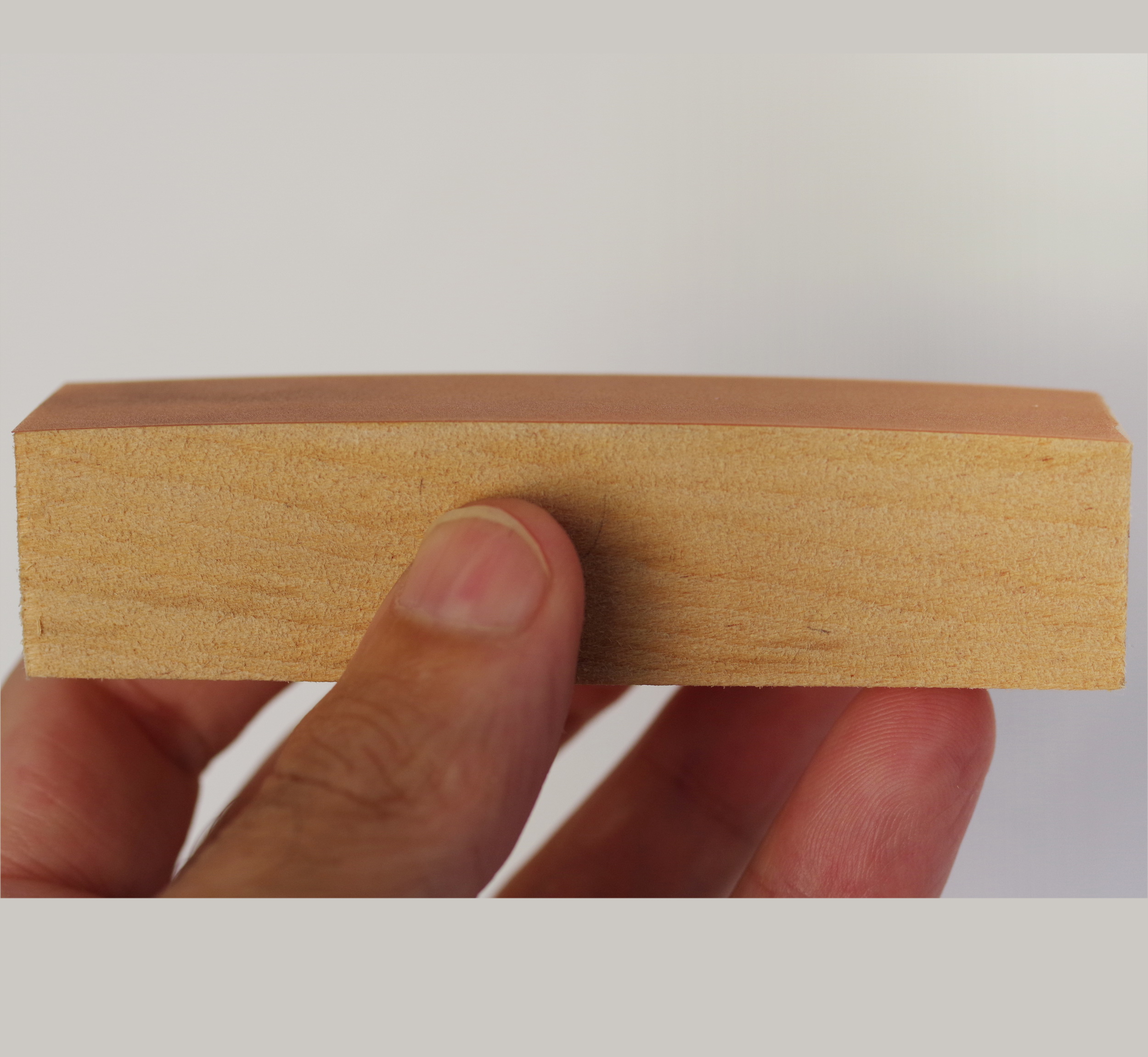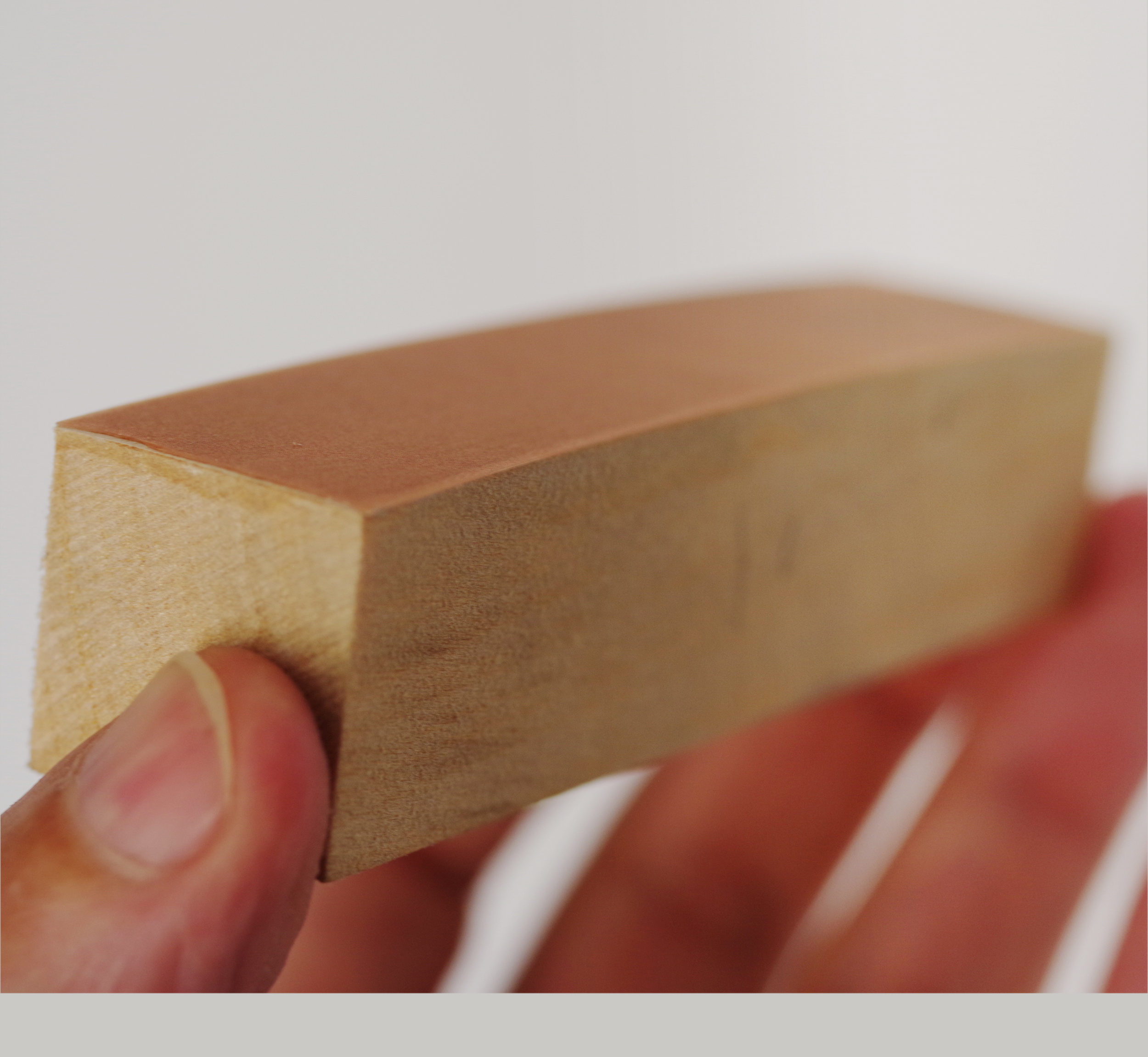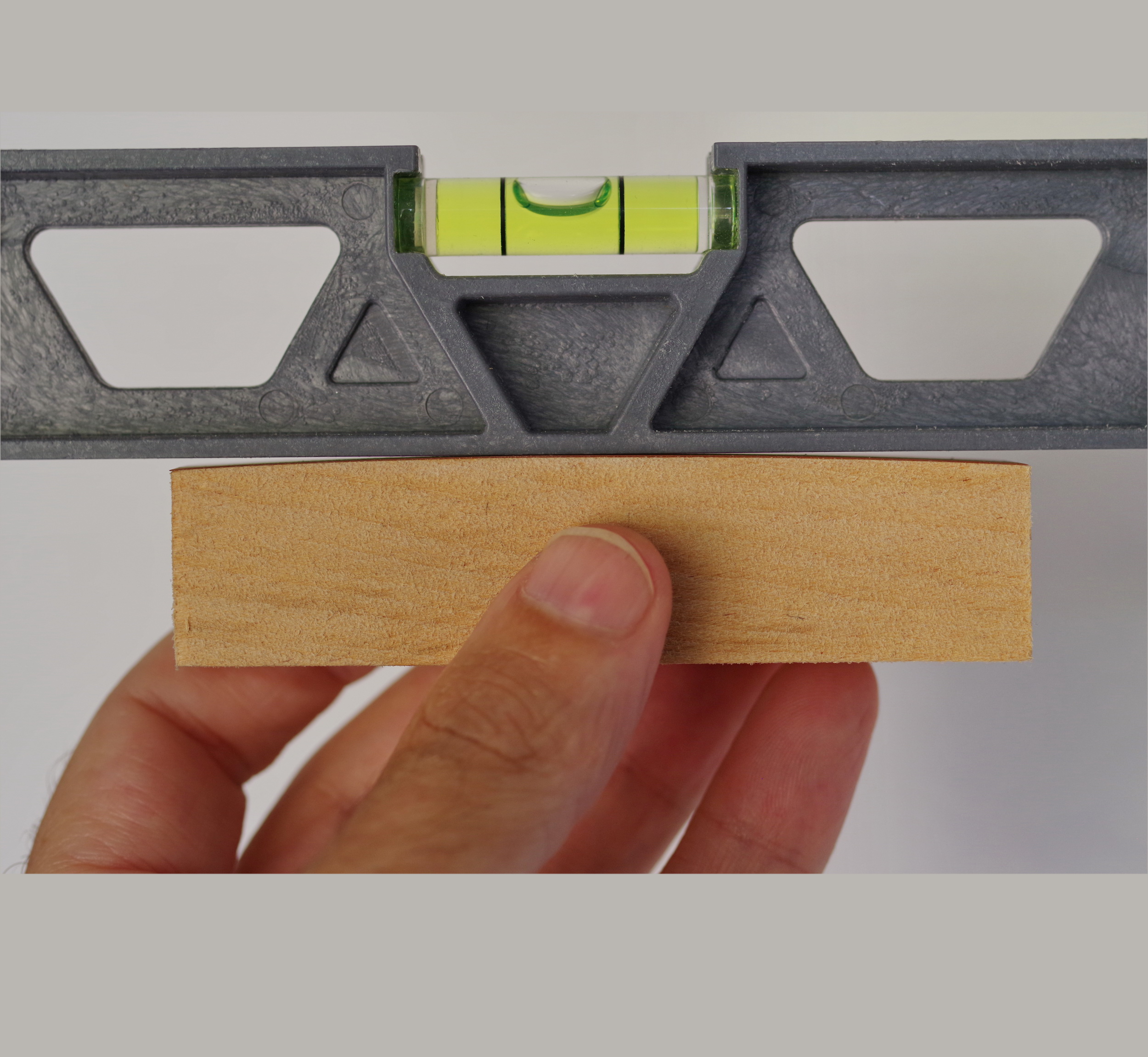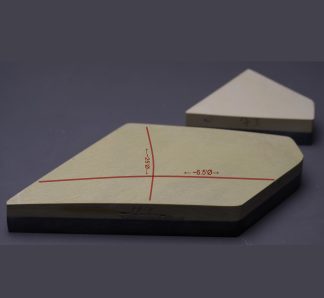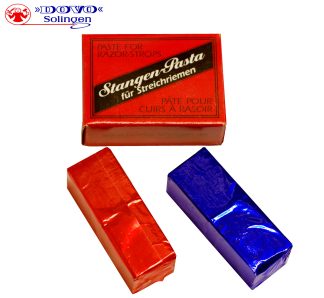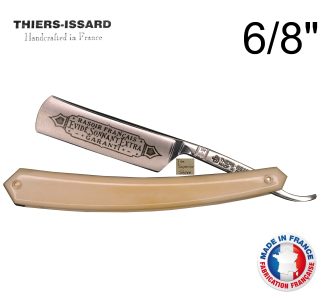Description
However, many men reading this who might already agree on the concepts in theory (and have not really tried the concave bevel shaving thing much themselves) don’t want to buy an expensive custom lapping plate in practice, nor have to suffer through reshaping their whetstones. Manual labor stinks! Well, that’s where this little guy comes in; it won’t need reshaping, and gives you that concave bevel for peanuts!
This little 4x1x1″ Bass wood block has had one of its four 1×4″ surfaces shaped with “the Jarrod plate” and polished through 1000# sandpaper fineness, doused with isopropyl alcohol so I could be sure to get a bubble-free adhesion, and then had a small slice of 15-micron (~1200#) 3M lapping film squeegeed on to its surface.
They’re not parts for the Space Shuttle; I’m trying with my Dahle trimmer to cut them down perfectly, but the little wood blocks aren’t exactly perfect in their 1x1x4″ cuts, and neither are the little slices of 3M film, and then you’ve still got to put the sticker on the wood. That’s OK, though, because straight razors aren’t perfect, and don’t forget that the wood block is an ellipse, not a cylinder; the center line of the wood block is ‘taller’ than the “railings”.
Use this little block with a sparing but thorough application of honing oil of some sort, like plain mineral oil or Ballistol, so that you can get quite a few uses out of the block. With this ~1200# action, and the shape of 6.5’Ø x 25’Ø expressed across the 4″ x 1″ shaped section, you can reset the bevels of razors that have been honed on flat surfaces quite quickly. It won’t be the fastest, best choice for a razor in disrepair or a razor honed with a taped spine and all flat stones for a long time, etc., for that I’d start with the 30-micron step, but it is by no means slow, either.
Presuming you have a collection of finer and kept flat sharpening stones, you will then further refine your bevel on your other, flat, finer stones…but DO NOT erase all the coarser striations that you’ve made with this bevel-setting stone!!! This stone will leave behind a concave bevel shape with either a frayed semi-apex, or a clean apex with a little “burr” hanging off of the end of it, usually pointing slightly toward the opposite side of the bevel from which you just worked over. When you switch to your flat stones with finer action, they’ll immediately begin first by removing the burr or frayed-ended bevel you’ve just created, and then by bludgeoning, geometrically speaking, the concaved shape you’ve just created by carving in a thicker, finer-apexed, flat tip on what remains of the incumbent concave bevel.
YOU WANT TO SPEND AS LITTLE TIME AS POSSIBLE ON THE SUCCESSIVE STEPS, SO THAT THE VAST MAJORITY OF YOUR BEVEL’S FORM REMAINS CONCAVE, NOT FLAT. Once you’ve taken over the whole bevel span with this tool, switch to at most two flat/fine/hard type stones, and honestly it will work better to use natural, slow, hard stones than to use modern waterstones.
You could use something like a ~3000-5000# flat waterstone very briefly, write with a permanent marker only at the very apex of your incumbent concaved bevel, and stay on your flat waterstone until such time that the first 0.1-0.2mm worth of width of the bevel as expressed from the apex toward the spine has had the permanent marker removed, and at that point if you were to switch to a flat/hard/fine finishing stone, you are guaranteed to have it only refine the little flat triangle apex you’ve just created with your second-step stone. A bevel might be 1.0mm wide on a healthy 6/8″ razor, and you should leave at least 0.7mm worth of that 1.0mm of width with the coarse marks from this “stone”, so that you’ll have a mostly-concave bevel, which will move around more than you’re used to, and which is more thin behind the actual edge than your flat bevel can provide. The thinness and movement are what makes the concave bevel so great in my opinion, the actual use of a concave shape all the way through to the apex is not something I think the vast majority of straight razor shavers will actually need (though, to be fair, I can say unequivocally speaking for myself that the very best shaves I get are when none of the bevel form has been made flat…FINISHING that way in honing, however, is a true perpetual challenge).
It is not a permanent solution, but then no sharpening stone lasts forever. You’ll get quite a few razor-resets out of it, I’d imagine. I am working to have in late 2024 or early 2025 an offer of a permanently-shaped diamond hone, using the same basic shape shown here but with 1000# diamond mesh in a shape that won’t change and a surface that’s 2×6″, for a small speedy bench stone. But for a homebrewed noncommercial sharpening solution, with the razor stationary in your off hand or a table vise and this little rubbing block moving on the stationary razor, you could do a lot worse!

